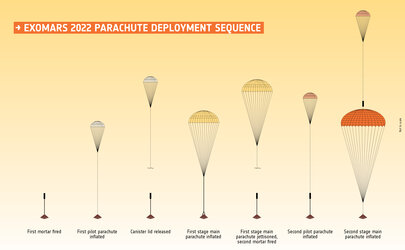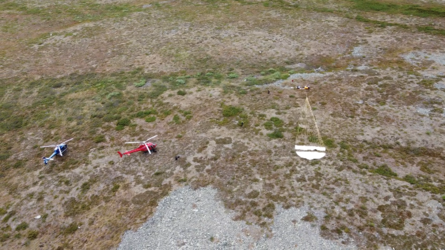Accept all cookies Accept only essential cookies See our Cookie Notice

About ESA
The European Space Agency (ESA) is Europe’s gateway to space. Its mission is to shape the development of Europe’s space capability and ensure that investment in space continues to deliver benefits to the citizens of Europe and the world.
Highlights
ESA - United space in Europe
This is ESA ESA facts Member States & Cooperating States Funding Director General Top management For Member State Delegations European vision European Space Policy ESA & EU Space Councils Responsibility & Sustainability Annual Report Calendar of meetings Corporate newsEstablishments & sites
ESA Headquarters ESA ESTEC ESA ESOC ESA ESRIN ESA EAC ESA ESAC Europe's Spaceport ESA ESEC ESA ECSAT Brussels Office Washington OfficeWorking with ESA
Business with ESA ESA Commercialisation Gateway Law at ESA Careers Cyber resilience at ESA IT at ESA Newsroom Partnerships Merchandising Licence Education Open Space Innovation Platform Integrity and Reporting Administrative Tribunal Health and SafetyMore about ESA
History ESA Historical Archives Exhibitions Publications Art & Culture ESA Merchandise Kids Diversity ESA Brand Centre ESA ChampionsLatest
Space in Member States
Find out more about space activities in our 23 Member States, and understand how ESA works together with their national agencies, institutions and organisations.
Science & Exploration
Exploring our Solar System and unlocking the secrets of the Universe
Go to topicAstronauts
Missions
Juice Euclid Webb Solar Orbiter BepiColombo Gaia ExoMars Cheops Exoplanet missions More missionsActivities
International Space Station Orion service module Gateway Concordia Caves & Pangaea BenefitsSpace Safety
Protecting life and infrastructure on Earth and in orbit
Go to topicAsteroids
Asteroids and Planetary Defence Asteroid danger explained Flyeye telescope: asteroid detection Hera mission: asteroid deflection Near-Earth Object Coordination CentreSpace junk
About space debris Space debris by the numbers Space Environment Report In space refuelling, refurbishing and removingSafety from space
Clean Space ecodesign Zero Debris Technologies Space for Earth Supporting Sustainable DevelopmentLatest
Applications
Using space to benefit citizens and meet future challenges on Earth
Go to topicObserving the Earth
Observing the Earth Future EO Copernicus Meteorology Space for our climate Satellite missionsCommercialisation
ESA Commercialisation Gateway Open Space Innovation Platform Business Incubation ESA Space SolutionsLatest
Enabling & Support
Making space accessible and developing the technologies for the future
Go to topicBuilding missions
Space Engineering and Technology Test centre Laboratories Concurrent Design Facility Preparing for the future Shaping the Future Discovery and Preparation Advanced Concepts TeamSpace transportation
Space Transportation Ariane Vega Space Rider Future space transportation Boost! Europe's Spaceport Launches from Europe's Spaceport from 2012Latest

Heat sterilisation of ExoMars parachute
Thank you for liking
You have already liked this page, you can only like it once!
A technician places a nearly 70 kg parachute designed for ESA and Roscosmos’s ExoMars 2020 mission inside the dry heater steriliser of the Agency’s Life, Physical Sciences and Life Support Laboratory, based in its Netherlands technical centre.
Mars is a potential abode of past and perhaps even present-day life. Accordingly, international planetary protection regulations require any mission sent to the Red Planet to undergo rigorous sterilisation, to prevent terrestrial microbes from piggybacking their way there.
The Lab’s Alan Dowson explains: “This is the ‘qualification model’ of the 35-m diameter main parachute for ExoMars 2020, basically a test version which allows us to finalise our sterilisation procedures ahead of the flight model chute’s arrival.
“This version has been threaded with thermal sensors, allowing us to see how long it takes to reach the required sterilisation temperature in all parts of the folded parachute, even in the hardest to heat points. Our target was to sterilise at 125 °C for 35 hours and 26 minutes, and the oven took about 44 hours to reach that temperature to begin with.”
The oven is part of the Lab’s 35 sq. m ‘ISO Class 1’ cleanroom, one of the cleanest places in Europe. All the cleanroom’s air passes through a two-stage filter system. Anyone entering the chamber has to gown up in a much more rigorous way than a hospital surgeon, before passing through an air shower to remove any remaining contaminants.
“If you imagine our clean room as being as big as the entire Earth’s atmosphere, then its allowable contamination would be equal to a single hot air balloon,” adds Alan. “Our ISO 1 rating means we have less than 10 dust particles measuring a tenth of one millionth of a metre in diameter per cubic metre of air.”
The mostly nylon and Kevlar parachute, packed into an 80-cm diameter donut-shaped unit, was delivered by Italy’s Arescosmo company. This qualification model will now be sent back there for testing, to ensure this sterilisation process causes no change to the parachute’s material properties.
Alan explains: “We will receive the parachute flight model later this spring for the same sterilisation process – identical to this version, except without any thermal sensors.”
ExoMars’s smaller first stage 15-m diameter parachute has already gone through sterilisation using the oven. This is the parachute that opens during initial, supersonic atmospheric entry, with the second, larger chute opening once the mission has been slowed to subsonic velocity.
The Lab has also tackled a variety of ExoMars instruments and subsystems, but this second stage subsonic parachute is the single largest item to be sterilised. The sterilisation process aims to reduce the overall mission ‘bioburden’ to a 10 thousandth of its original level.
-
CREDIT
ESA–M. Cowan -
LICENCE
ESA Standard Licence

Sterilisation for planetary protection

Sterilising an antenna for Mars

ExoMars 2022 parachute deployment sequence

ExoMars parachute high-altitude drop test















 Germany
Germany
 Austria
Austria
 Belgium
Belgium
 Denmark
Denmark
 Spain
Spain
 Estonia
Estonia
 Finland
Finland
 France
France
 Greece
Greece
 Hungary
Hungary
 Ireland
Ireland
 Italy
Italy
 Luxembourg
Luxembourg
 Norway
Norway
 The Netherlands
The Netherlands
 Poland
Poland
 Portugal
Portugal
 Czechia
Czechia
 Romania
Romania
 United Kingdom
United Kingdom
 Slovenia
Slovenia
 Sweden
Sweden
 Switzerland
Switzerland

























